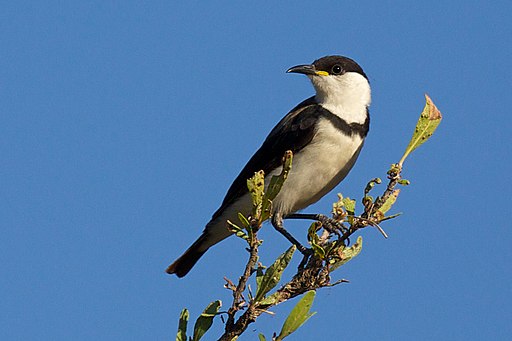Superregnum: Eukaryota
Cladus: Unikonta
Cladus: Opisthokonta
Cladus: Holozoa
Regnum: Animalia
Subregnum: Eumetazoa
Cladus: Bilateria
Cladus: Nephrozoa
Superphylum: Deuterostomia
Phylum: Chordata
Subphylum: Vertebrata
Infraphylum: Gnathostomata
Megaclassis: Osteichthyes
Cladus: Sarcopterygii
Cladus: Rhipidistia
Cladus: Tetrapodomorpha
Cladus: Eotetrapodiformes
Cladus: Elpistostegalia
Superclassis: Tetrapoda
Cladus: Reptiliomorpha
Cladus: Amniota
Classis: Reptilia
Cladus: Eureptilia
Cladus: Romeriida
Subclassis: Diapsida
Cladus: Sauria
Infraclassis: Archosauromorpha
Cladus: Crurotarsi
Divisio: Archosauria
Cladus: Avemetatarsalia
Cladus: Ornithodira
Subtaxon: Dinosauromorpha
Cladus: Dinosauriformes
Cladus: Dracohors
Cladus: Dinosauria
Ordo: Saurischia
Cladus: Eusaurischia
Subordo: Theropoda
Cladus: Neotheropoda
Cladus: Averostra
Cladus: Tetanurae
Cladus: Avetheropoda
Cladus: Coelurosauria
Cladus: Tyrannoraptora
Cladus: Maniraptoromorpha
Cladus: Maniraptoriformes
Cladus: Maniraptora
Cladus: Pennaraptora
Cladus: Paraves
Cladus: Eumaniraptora
Cladus: Avialae
Infraclassis: Aves
Cladus: Euavialae
Cladus: Avebrevicauda
Cladus: Pygostylia
Cladus: Ornithothoraces
Cladus: Ornithuromorpha
Cladus: Carinatae
Parvclassis: Neornithes
Cohors: Neognathae
Cladus: Neoaves
Cladus: Telluraves
Cladus: Australaves
Ordo: Passeriformes
Subordo: Passeri
Infraordo: Corvida
Superfamilia: Meliphagoidea
Familia: Meliphagidae
Genus: Certhionyx
Species: Certhionyx pectoralis
Name
Certhionyx pectoralis (Gould, 1841)
References
Proceedings of the Zoological Society of London (1840) Pt8 no.95 p. 170
Vernacular names
The banded honeyeater (Cissomela pectoralis) is a species of honeyeater in the family Meliphagidae with a characteristic narrow black band across its white underparts.[2] It is endemic to tropical northern Australia.
Taxonomy and systematics
The scientific name for the banded honeyeater is Cissomela pectoralis (Gould, 1841).[3] The holotype was Holotype ANSP 18224 male, Australia: north coast, held in the Academy of Natural Sciences of Drexel University, Philadelphia.[4]
The banded honeyeater was previously placed in the genus Certhionyx, but was moved to the monotypic genus Cissomela after a molecular phylogenetic analysis, published in 2011, showed that the original genus was polyphyletic.[5][6]
The genus name Cissomela (Bonaparte, 1854)[7] means "honey magpie" from the Greek kissa for 'magpie', thus referring to the black and white colouring, and mela meaning 'honey' for its feeding habits. The specific epithet pectoralis comes from the Latin pectoris for 'breast', referring to the distinctive banded breast of this bird.[8]
Description
The banded honeyeater is a small, pied honeyeater with a distinctive black breast band across white underparts.[2][9] It has a black back, tail and head, a long curved bill and long legs.[10]
It has a wingspan of 12–14 cm (4.7–5.5 in), the bill measures 14–18 mm (0.6–0.7 in), the body length is 11.5–13.5 cm (4.5–5.3 in) and it weighs 8–13 g (0.3–0.5 oz).[2][10]
Behaviour and ecology
The IUCN Red List rating, the Northern Territory Conservation Status and Queensland Conservation Status for this species is Least Concern (LC).[1][10]
The banded honeyeater inhabits tropical grassy woodland, open forests, mangroves and Melaleuca swamps. It feeds on the nectar of eucalypts and some other open flowers, such as Grevilleas, paperbarks and Bauhinias, plus insects. It usually moves in pairs or small groups, but large groups can gather when blossom is plentiful. It is a blossom nomad or can have seasonal movements in various parts of its range, which is restricted to tropical northern Australia.[2][9][10]
References
BirdLife International (2016). "Cissomela pectoralis". IUCN Red List of Threatened Species. 2016: e.T22703913A93943194. doi:10.2305/IUCN.UK.2016-3.RLTS.T22703913A93943194.en. Retrieved 11 November 2021.
Menkhorst, Peter; Rogers, Danny; Clarke, Rohan; Davies, Jeff; Marsack, Peter; Franklin, Kim (2017). The Australian Bird Guide. Clayton, Vic: CSIRO Publishing. pp. 392–393. ISBN 978-0643097544.
Gould, John (1848). The Birds of Australia : in seven volumes. London: Published by the author. pp. 168–178.
"Species Certhionyx (Certhionyx) pectoralis (Gould, 1841)". Australian Faunal Directory. Retrieved 2020-04-15.
Nyári, Á.S.; Joseph, L. (2011). "Systematic dismantlement of Lichenostomus improves the basis for understanding relationships within the honeyeaters (Meliphagidae) and historical development of Australo–Papuan bird communities". Emu. 111 (3): 202–211. doi:10.1071/mu10047. S2CID 85333285.
Gill, Frank; Donsker, David (eds.). "Honeyeaters". World Bird List Version 6.1. International Ornithologists' Union. Retrieved 28 January 2016.
Bonaparte, C.L. (1854). "Conspectus systematis ornithologiae". Comptes Rendus de l'Académie des Sciences, Série D. 38: 260, 264.
Fraser, Ian; Gray, Jeannie (2019). Australian Bird Names: Origins and Meanings. Clayton South, Vic: CSIRO Publishing. pp. 183, 188. ISBN 9781486311637.
Slater, Peter; Slater, Pat; Slater, Raoul (2009). The Slater Field Guide to Australian Birds (2nd ed.). London, Sydney, Auckland: Reed New Holland. pp. 210–211. ISBN 9781877069635.
Australia, Atlas of Living. "Species: Certhionyx (Certhionyx) pectoralis (Banded Honeyeater)". bie.ala.org.au. Retrieved 2020-04-15.
Retrieved from "http://en.wikipedia.org/"
All text is available under the terms of the GNU Free Documentation License


